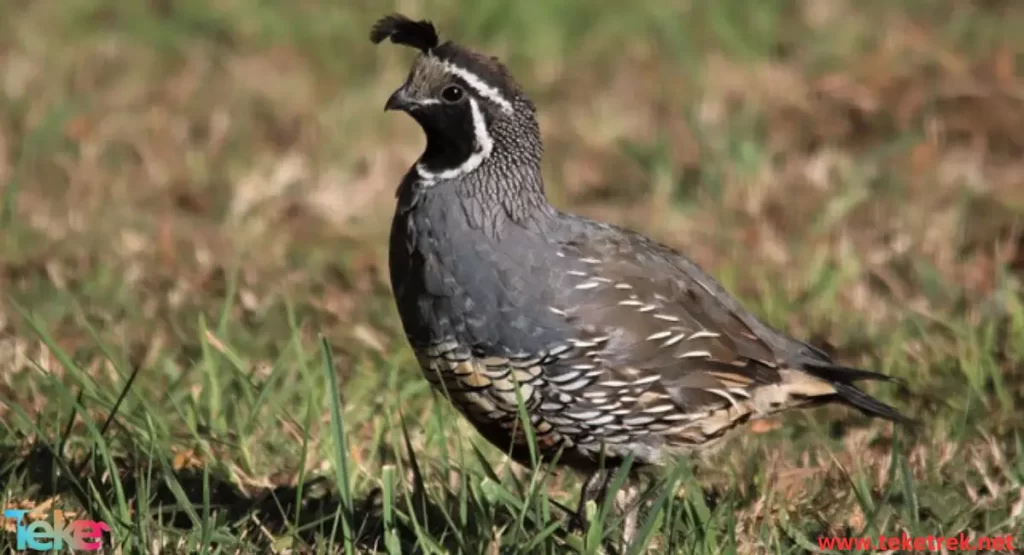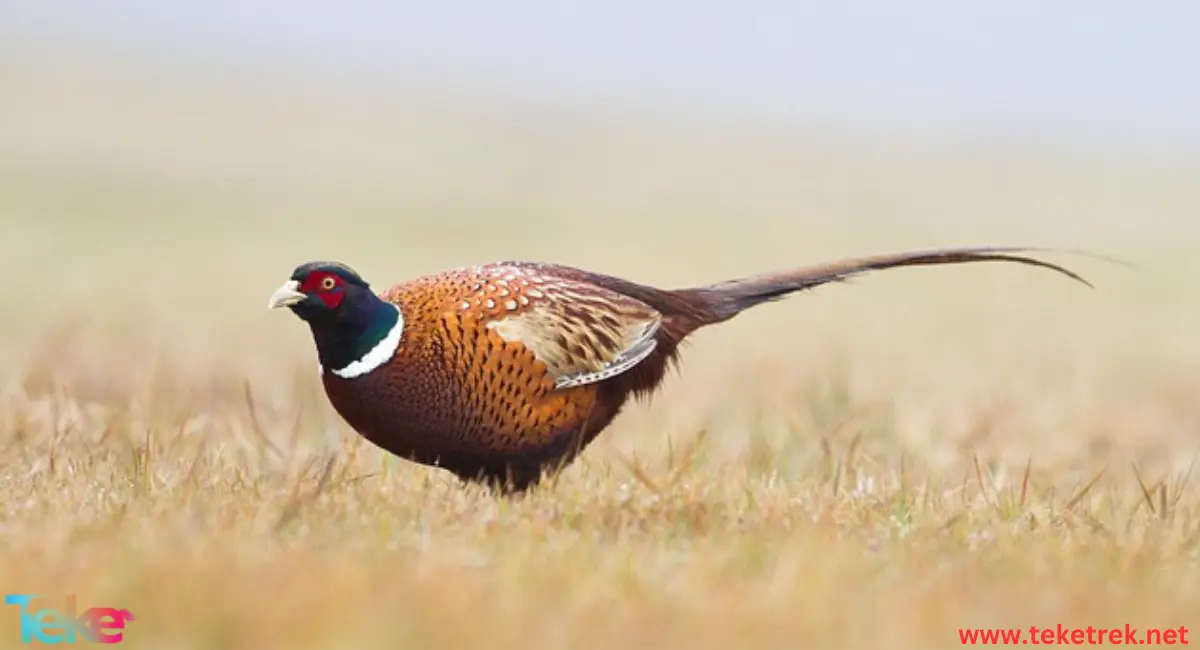The quail is considered one of the beautiful and exciting species of birds that live in various parts of the world. It is distinguished by the beauty of its feathers and its diverse colors that attract the attention of many. It is considered a small bird, reaching a length of about 15 centimetres. It feeds on insects and seeds.
Quails are distinguished by their beautiful and distinctive voice, which is considered a distinctive sign of them. They are found in rural areas and forests around the world, and spend most of their time searching for food and building nests. Quail are considered migratory birds, as they migrate in the winter to search for warm areas.
The fur is found in many cultures and religions, where it is considered a symbol of peace and freedom. Studying quails by researchers is important to understand their behavior and protect them from the various threats they face in their natural environment.
In this article in TekeTrek Website, we will introduce you to the most important information related to this object. Follow along with us.

What is the meaning of quail bird?
The common quail, the common quail, or the common wheatear, is a small-sized creature, belonging to the pheasant family of the order Poultry, spread in Africa, Asia, and Europe. It also resembles chicken in the way it feeds and raises.
The quail is the only bird in the chicken family that has the ability to migrate and fly. It spends hot summers in Europe and migrates to Africa in the winter, and then returns to its original homeland.
Types of quail
- Old World quail
- Brown quail
- New Zealand quail
- Laughing quail
- Japanese quail
- Blue quail
- Canary Islands quail
- Himalayan quail
- Common quail
- Rain quail
- King quail
- New World quail
- Marbled forest quail
- Chestnut quail
- Black-backed quail
- Spotted forest quail
- Singing quail, and Monty Zuma (Singing quail)
- Venezuelan quail
- Striped-faced quail
- Mountain and California quail
- Northern white, crested, and black-throated bob.
- Striped quail
- Tree partridge quail
Characteristics of the quail bird
The free bird is one of the birds that prefers isolation, and lives in areas where it finds food and drink. The bird mixes during mating periods and migrates in groups in search of moderate temperatures. What is special about a quail?
- The length of the quail ranges from 11 to 20 cm.
- The quail is distinguished by its wingspan, which can reach 35 cm.
- The quail’s legs are strong and long, and are colored brown with the underside orange.
- The quail has a small, curved beak that is colored black.
- Its average weight ranges from 68 to 139 grams.
- The quail’s feathers are striped and arranged, giving it an elegant aesthetic appearance.
- Quail live from 3 to 5 years, and there are species that may reach 10 years old.
- It can be found in several colors such as blue, brown, white and black.
The primary habitat of the quail
- The quail bird is spread throughout the continents of Asia, Africa and Europe. There are several types of it in Australia and North America.
- Quail lives in fields and farms, where they feed on herbs, grains, and insects. It prefers to live in humid environments.
- Quail begins to migrate in the fall to Europe to spend their summer in cool places suitable for their nature. Then, in the spring, he returns to Africa to spend the winter.
Mating stages in quail
The female quail lays her eggs between 6 and 7 weeks of age, producing approximately 200 to 300 eggs each year.
The mating season occurs during the winter. This is after the bird migrated to warm regions in Africa. One male is sufficient for every 5 or 7 females.
Nutrition of quail
The nutrition of domestic birds is no different from that of wild birds. It feeds mostly on grains such as corn, wheat, rice, and grasses, in addition to ants, worms, and beetles.
However, home rearing requires a high degree of care, through correct and balanced nutrition, so that quails achieve the best results within short periods of time.
Features of quail meat?
Quail meat has several features that make it an excellent choice as a healthy alternative to chicken meat:
- High percentage of protein: Quail meat contains a high percentage of protein, which is considered essential for building and maintaining tissues in the body.
- Vitamin B12 and Vitamin A: Quail meat contains large amounts of Vitamin B12 and Vitamin A, which are essential for a healthy body and immune system.
- Safe for cardiovascular health: Because quail meat contains a low percentage of cholesterol and fats, it is considered a healthy choice for the heart and blood vessels.
- Quail eggs: In addition to their meat, quail eggs are considered beneficial for the body. Because it contains higher levels of iron, vitamins, and riboflavin compared to chicken eggs.
Based on this information, it appears that quail meat is a nutritious and healthy option, and can be an ideal substitute for chicken meat in your diet


How Does the Quail Help in Natural Pest Control?
The quail is considered an environmentally beneficial bird due to its diet of insects and larvae, especially in agricultural areas and forests. Quails naturally feed on a variety of pests such as grasshoppers, ants, and beetles, reducing the need for harmful chemical pesticides. Environmental studies show that the presence of quail in certain areas significantly reduces pest populations, which supports ecological balance and protects crops and vegetation.
Quail Eggs vs. Chicken Eggs: Documented Nutritional Facts
Quail eggs are highly nutritious and often surpass chicken eggs in their vitamin and mineral content, including Vitamin B12, iron, and phosphorus. They are rich in protein and lower in fat compared to chicken eggs. Additionally, quail eggs are less likely to cause allergic reactions, making them an ideal option for children or individuals sensitive to chicken egg proteins. From a digestion standpoint, quail eggs are easier to digest due to their natural digestive enzymes, which makes them suitable for specialized diets.
Life Cycle of a Quail: From Egg to Maturity
The quail’s life cycle progresses rapidly and clearly, from egg to mature bird ready for reproduction in a short time compared to other birds. The main stages are:
- Egg Stage (0–18 days):
The female lays eggs after mating, which are incubated at 37.5°C with ~60% humidity. Incubation lasts 16–18 days, with hatching beginning around day 14. - Hatching (Day 18):
Upon hatching, the chick weighs 6–8 grams and is covered in soft down. It requires a temperature of 35–37°C since it cannot yet regulate its body temperature. - Chick Stage (Day 1–7):
In this critical week, heat and a high-protein diet (24–28%) are essential. Clean water and proper nutrition enable rapid development of limbs and feathers. - Active Growth Stage (Day 8–21):
The bird gains weight and muscle quickly. True feathers replace the down, and early signs of gender differentiation appear. - Pre-Maturity Stage (Day 22–35):
The bird closely resembles an adult; males begin to vocalize, feathers are nearly fully developed, and the bird becomes more mobile. - Sexual Maturity (Day 35–45):
At 5–6 weeks, quails reach reproductive age. Females start laying eggs and males attempt mating. This marks the start of productive farming.
Why Is Quail One of the Fastest Growing Birds?
Quail grows rapidly due to a combination of biological and nutritional factors that work from the moment of hatching. Growth-related genes activate early, enabling fast development. Quail also has exceptional feed conversion abilities, efficiently turning protein and energy into body mass. Its small size and light frame support faster growth compared to larger birds. A short incubation period of only 18 days also contributes to its growth speed, making quail ideal for time-efficient and economically viable farming.
Quail Species Around the World: Differences in Appearance and Behavior
There are over 130 species of quail worldwide. Notable types include:
- Japanese Quail: Most commonly raised, medium-sized with brown feathers.
- European Quail: More reserved in behavior, prefers wild habitats.
- African Quail: Smaller in size and highly heat-resistant.
- American Quail: Colorful with patterned feathers and distinct vocal tones.
These species differ in behavior, such as being active during the day or night, flight capabilities, and maturity rate.
Productive Life Span of a Quail: Signs of Egg Production Decline
Quail starts laying eggs at 6–7 weeks old and continues up to 10–12 months in commercial environments. Signs of production decline include:
- Fewer and smaller eggs
- Weaker shells
- Changes in behavior, like lethargy or appetite loss
Importance of Lighting in Quail Farming: Daily Light Requirements
Lighting is crucial in stimulating egg production. Quail needs 14–16 hours of light daily, whether from natural sunlight or artificial sources. Light influences hormone release related to ovulation, so using timers is recommended to maintain consistent light cycles.
How to Easily Distinguish Male from Female Quails
You can differentiate by:
- Color: Males usually have reddish-brown chests, females have dark speckled chests.
- Behavior: Males are more vocal and aggressive.
- Reproductive Gland: Males have a foamy gland near the vent, visible upon gentle pressure.
Common Diseases in Quail and How to Prevent Them
- Coccidiosis: A parasitic intestinal disease causing diarrhea and weight loss. Treated with preventive meds.
- Respiratory Infections: Caused by poor ventilation or temperature changes.
- Vitamin Deficiencies: Lead to weak feathers and developmental issues.
Prevention includes cleanliness, good ventilation, balanced nutrition, regular vaccinations, and proper management.
Frequently asked questions about quail
There are many common questions that people in general and those interested in birds specifically ask about quail, the most important of which are:
- Is the quail the same as the free-range bird?
Yes, the quail is the same as the free-range bird, as it is one of the bird species that is distinguished by its diversity and uniqueness.
- What are the common names for quail?
The quail is called the quail.
- Do quails fly or not?
Yes, the quail is the only bird in the chicken family that has the ability to fly and migrate. It spends the summer in Europe and migrates to Africa in the cold winters.
- Is quail meat delicious?
Yes, free range bird meat is a delicious, cholesterol-free meat with a pleasant taste. Knowing that it needs a small space in its upbringing and few nutritional needs.
- What are the most important bacterial diseases that affect quails?
Diarrhea, decreased egg production, chicken cholera, white diarrhea, in addition to enteritis and typhoid.
- What are the viral diseases that affect furriers?
Newcastle, lycosis, smallpox, influenza, in addition to bronchitis, encephalitis.
- What are the most important parasitic diseases that affect quail birds?
Quails can be infected with many parasitic diseases such as worms and mosquitoes.
- How many eggs do quails lay in a year?
Quail lay about 300 eggs annually.
- How fast is a quail?
The speed of the quail is 30-40 miles per hour.
- Do quails need water?
Yes, quails need water.
In short, it can be said that quail is an excellent food choice characterized by its high nutritional value and the health benefits it provides. Quail meat and eggs are a healthy and delicious option. It can be included in the diet to benefit from its many benefits.
In addition, quail meat can be eaten in a variety of ways and prepared in different ways to enjoy a delicious and healthy dining experience at the same time. Ultimately, individuals should seek variety in their food choices and explore healthy options like quail to maintain their health and well-being.






